2022 Vintage War Birds from Lone Star Flight Museum
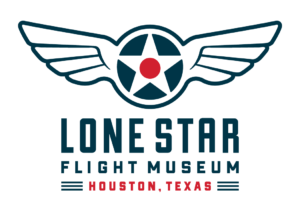 Lone Star Flight Museum is back in 2022 With a Great Collection of Vintage Aircraft – both flying and on display
Lone Star Flight Museum is back in 2022 With a Great Collection of Vintage Aircraft – both flying and on display
The single BIGGEST survey request, every year, is vintage warbirds. Some of the most immaculate vintage warbirds at the CAF Wings Over Houston Airshow come courtesy of the Lone Star Flight Museum, and we are so excited to partner with them again this year. This Insider email features the Lone Star Flight Museum and some of their most prestigious aircraft.
About Lone Star Flight Museum
The Lone Star Flight Museum (LSFM) opened the doors of its new $38 million, 130,000 square-foot aviation history and STEM learning facility in the fall of 2017. The world-class facility shares the story of flight in the Lone Star State and features the contributions Texas and Texans have made to aviation. Highlights of the museum include the Texas Aviation Hall of Fame, the Museum’s renowned flying collection of historic aircraft, the $1 million, high-tech Aviation Learning Center and dynamic hands-on exhibits.
Here are some of the Lone Star Flight Museum aircraft that will be featured (both flying and on the ground) at the 2022 Wings Over Houston Airshow.
SBD Dauntless
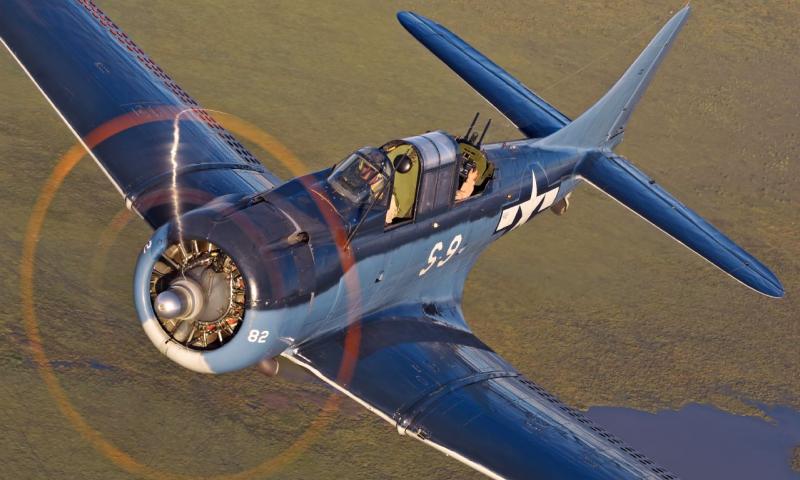
The SBD (Scout Bomber Douglas) Dauntless was derived directly from the Northrop BT-2 design of 1935. After Northrop became a subsidiary of Douglas, the new aircraft took on a Douglas designation. First orders for the SBD-1 and SBD-2 were placed by the Marine Corps and the Navy respectively on 8 April 1938, both entering service near the end of 1940. In March 1941, the SBD-3 was introduced, featuring protective armor and a more powerful engine than its predecessors. Armament consisted of two .50-inch machine guns fixed forward on the engine cowling and twin 0.30 inch machine guns manned by a second crewman for protection astern. Simultaneously, Army Air Corps’ interest in the design led to additional production orders, those in Army service designated A-24 and nicknamed “Banshee”. The SBD-5 (A-24B) followed soon after, its principal characteristic being a further engine upgrade.
TBM-3E Avenger
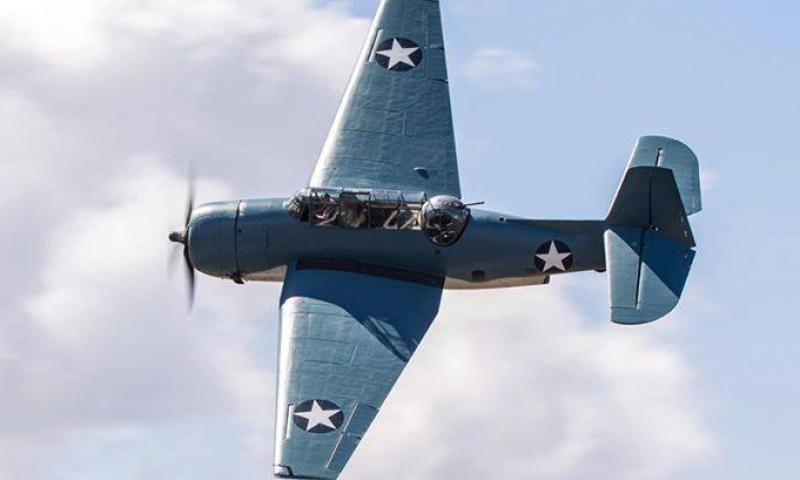
The Avenger was the largest single engine aircraft of WWII. Avengers first saw combat during the Battle of Midway in June 1942 and quickly equipped every U.S. Navy carrier operating in World War II, as well as many carriers of the British Royal Navy. Because Grumman was being pushed to produce F6F Hellcat fighters, production of the Avenger was turned over to General Motors’ Eastern Aircraft Division which built 7,546 aircraft under the designation TBM. These aircraft would go on to drop more tonnage in bombs and torpedoes than any other naval aircraft and would sink dozens of enemy ships including the Japanese super-battleships Yamato and Musashi. TBMs also accounted for 30 German and Japanese submarines as well as 98 enemy aircraft in air-to-air combat.
The key to the Avenger’s success was its versatility. In addition to its role as a torpedo bomber, TBMs were used for dive bombing, level bombing, night attack, photo reconnaissance, anti-submarine warfare, radar surveillance and light transport duties. Nicknamed the “turkey” for their slow lumbering movement and large ungainly appearance while coming in to land, the Avenger served into the mid-1950s and were supplied to allied nations such as Canada, France, England, Brazil, Japan, the Netherlands, New Zealand and Uruguay.
T-6 Texan
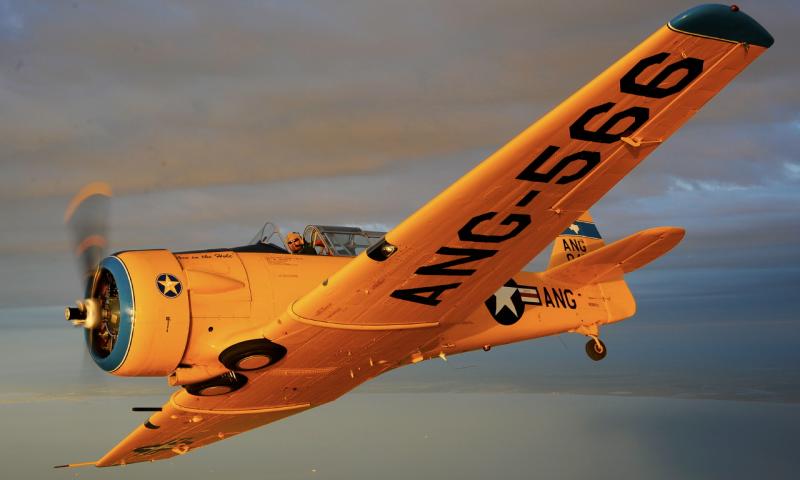
The North American T-6 Texan was known as “the pilot maker” because of its important role in preparing pilots for combat. The T-6 was the classroom for most of the Allied pilots who flew in World War II. The T-6 trained several hundred thousand pilots from the United States and many other countries for over three decades. A total of 15,495 of the planes were made. Although not as fast as a fighter, it was very manueverable and challenging enough to fly making it a great transition aircraft for the powerful and sophistacated fighters that would follow. The AT-6 was easy to maintain and repair and allowed pilots to train in all types of tactics, from ground strafing to bombardment and aerial dogfighting.
B-25 Mitchell
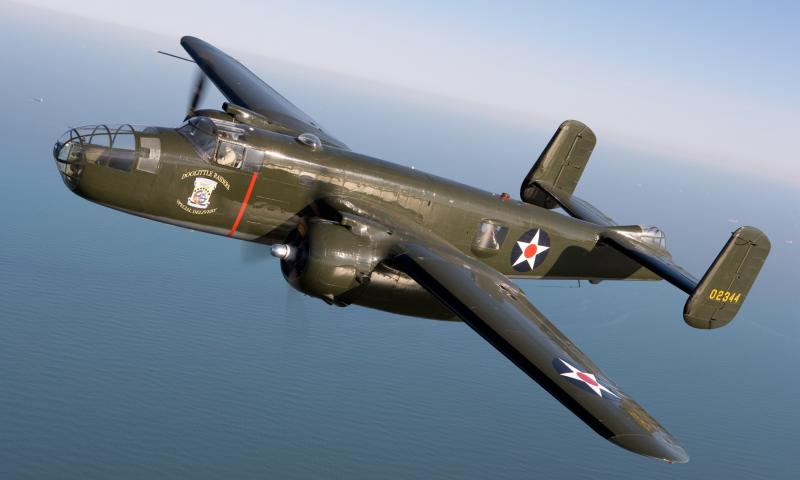
North American Aviation’s design of a twin-engine medium bomber was approved by the Army Air Corps in September 1939, and the prototype made its maiden flight less than a year later on 19 August 1940. Christened Mitchell in honor of Billy Mitchell, the American champion of air power theory, the B-25 would become the most widely-produced American twin-engine combat aircraft of World War II.
F4U Corsair
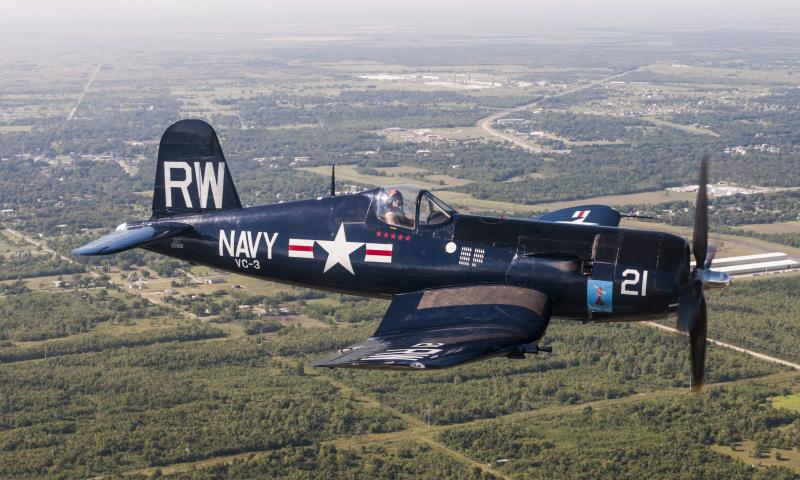 Chance Vought Aircraft Corporation contracted with the US Navy for a single prototype fighter aircraft in June 1938. Vought engineers selected the new 2,000 horsepower Pratt & Whitney R2800 engine for the project that would become the Corsair. The powerful engine required a large 14-foot diameter propeller, which necessitated changes in the design to assure ground clearance was met during carrier landings. These changes gave the Corsair its distinctive inverted gull wing shape by placing the landing gear at the lowest point on the wing making the gear more compact and robust. The Corsair made its maiden flight on 29 May 1940 and later became the first American fighter to exceed the 400-mph mark.
Chance Vought Aircraft Corporation contracted with the US Navy for a single prototype fighter aircraft in June 1938. Vought engineers selected the new 2,000 horsepower Pratt & Whitney R2800 engine for the project that would become the Corsair. The powerful engine required a large 14-foot diameter propeller, which necessitated changes in the design to assure ground clearance was met during carrier landings. These changes gave the Corsair its distinctive inverted gull wing shape by placing the landing gear at the lowest point on the wing making the gear more compact and robust. The Corsair made its maiden flight on 29 May 1940 and later became the first American fighter to exceed the 400-mph mark.
Don’t miss this opportunity to see these amazing airplanes take to the sky at this year’s Wings Over Houston Airshow, October 29-30 at Ellington Airport. And make sure to show our friends at Lone Star Flight Museum some love all year round!
Photo and Information Credits:
Lone Star Flight Museum
Get More Information on Lone Star Flight Museum:
GET YOUR WINGS OVER HOUSTON TICKETS!
Our goal is to provide you the best air show experience possible at a range of price points. Ticket types include everything from an affordable day of aviation thrills for the whole family to an premium air show experience. There’s something for everyone!
Service Fees: Some ticket types include a nominal service fee. All ticket transactions and payment are processed through a industry-standard secure online interface.
Please note: All sales are final and no refunds can be offered.
A Note on Performers:
Aircraft and performers are subject to change without notice, due to operational considerations. If anything changes, we will do our best to let you know. Thank you!
Your Privacy & Personal Information
The security of your personal online information is paramount to us! We attempt to go above and beyond to protect your online identity when using this web site or purchasing tickets to the Airshow. Any user information collected will be used for the purposes of giving you airshow updates, marketing the airshow, and selling tickets to the CAF Wings Over Houston Airshow. Your information will NEVER be sold or rented to any third parties. For additional privacy information details, please review our privacy policy.

